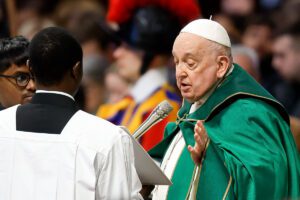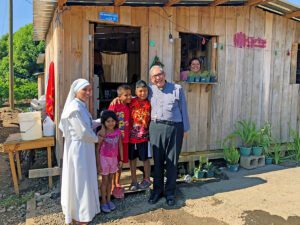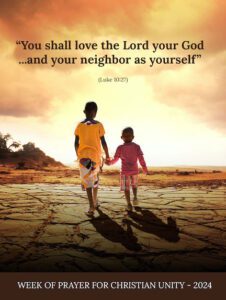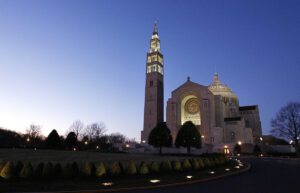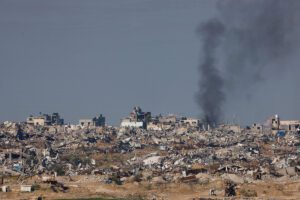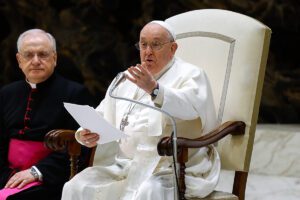(OSV News) – A new study offers a more nuanced take on the nation’s religiously unaffiliated, and the findings show that Catholic parishes need to become more “outward facing” to reach those beyond the pews, an evangelization expert said.
“This is the managing of the journey out of Christendom,” Sherry Anne Weddell, cofounder and executive director of the Colorado-based Catherine of Siena Institute, told OSV News. “And what we’re struggling with is, what does it mean now to function missionally outside of Christendom? That’s the transition.”
“Religious ‘Nones’ in America: Who They Are and What They Believe,” released Jan. 24 by Pew Research Center, found that about 28% of U.S. adults are religiously unaffiliated. Of that group, which has been dubbed the “nones,” 63% described their religion as “nothing in particular,” with 17% saying they were atheist and 20% saying they were agnostic.
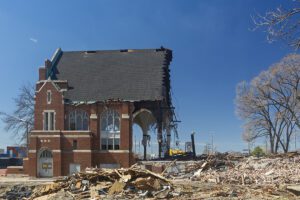
(OSV News photo/Jim West)
Weddell, author of the 2012 book “Forming Intentional Disciples” and a consultant for hundreds of parishes worldwide, said the study was “really fascinating” and “fits everything else” she is seeing in the field regarding “nones.”
“It’s not a surprise, but it’s wonderful to have it all documented in this way,” she said.
The Pew data reveals a more complex view of “nones,” exploring their views of God, religion, morality, science and spirituality.
Broadly, researchers found that most “nones” believe in the God of the Bible (13%) or another higher power (56%), but few attend religious services regularly: 90% said they “seldom” or “never” do.
Pew researchers noted that “nones” are “not uniformly anti-religious,” allowing that religion can do either equal amounts of harm and good (41%) or more good than harm (14%), although most “nones” maintain that religion does more harm than good (43%).
The “nones” — a roughly even mix of women (47%) and men (51%) — are a younger population, according to Pew, with 69% under the age of 50, and 31% of them 50 or older. In contrast, 45% of U.S. adults who identify with a religion are under 50, and 55% are age 50 or older. Men are significantly more represented among atheists and agnostics.
Gregory A. Smith, associate director of research at Pew Research Center and primary researcher for the study, told OSV News that “one of the most important factors in understanding the growth of the nones over time is that this is a generational thing.”
During the last few decades, said Smith, “quite religious” older cohorts of Americans who have aged and passed away “are being replaced by a new generation of young adults that is simply far less religious than their parents and their grandparents before them.”
Weddell sees the “nones” demographic as comprising “the generation of the sexual abuse scandals.”
“I’ve heard this over and over again: ‘My child was 18, when in 2002 … (clerical abuse scandals arose), and they’re old enough to understand it, and to get the kind of damage that it did and has done,'” said Weddell. “And since (2002), there’s just been all kinds of conflict within the church. … Their peers are skeptical, and the culture they’re immersed in, especially online, is skeptical.”
The Pew study found that the top reason “nones” cited for their stance was doubt about religious teachings themselves (60%), with 32% naming a lack of belief in God or any higher power.
In addition, 47% of “nones” listed dislike of religious organizations and 30% pointed to negative experiences with religious people. In total, 55% of the “nones” said religious organizations, religious people or both were key reasons for being nonreligious. In 44% of the nones, a lack of need or time for religion was cited.
The Pew study also adds an important dimension to what the authors call the “complicated” link between religious disaffiliation and civic engagement. While “nones” tend to vote, volunteer and follow public affairs at lower rates, that lower level of involvement is “concentrated among ‘nones’ whose religion is ‘nothing in particular,'” rather than agnostic or atheist. In fact, the study said that “atheists and agnostics tend to participate in civic life at rates matching or exceeding religiously affiliated people.” Overall, most “nones” expressed satisfaction with their family, social and communal lives, according to the study.
The researchers also highlighted the following features of “nones”:
– Moral decision making. Most “nones” (83%) base decisions between right and wrong on a desire to avoid hurting people, with an almost equally high percentage (82%) also saying that logic and reason are crucial in this regard. Feeling good about moral decisions is a major driver (69%), as is the desire to stay out of trouble (60%). The same factors also apply to religiously affiliated people, but the “nones” do not rely on religious beliefs to weigh such factors.
– Spirituality. More than half (54%) of “nones” undertake some activity (such as meditation, exercise, yoga, spending time in nature, centering themselves) to connect with either a sense of transcendence, others or their “true self.” Most “nones” also hold that animals have spirits or spiritual energies, and believe the same to be true for cemeteries, part of nature and certain objects. However, such beliefs and practices are also shared by those who are religiously affiliated.
– Perspective on science. “Nones” tend to view science more favorably than their religiously affiliated counterparts (56% compared to 40%). Yet most “nones” admit there is “something spiritual beyond the natural world” (63%) and that science is unable to explain some things (56%).
Smith told OSV News that while “there are a number of trends that suggest the U.S. is growing less religious … it’s also important to remember that in many ways, the U.S. remains a very religious place, and most Americans identify as Christians.”
For Catholics, the challenge is now to focus on “two big starting points” for recalibrating their pastoral outreach to “nones” — those who may be in the pews and those beyond the church doors, said Weddell.
“We want to break the silence about the reality of a living relationship with God; we want to break the silence about Jesus,” she said. “The church teaches that when we name his name, he is present; we’re invoking his presence.”
The second “crucial” step is “serious, intercessory prayer for a change in the local spiritual climate,” joining with Christ, who is “interceding for every human being, and for the purpose of God in the fulfillment of the Father’s plan of salvation,” Weddell said.
Such prayer lifts the “secular haze” that “makes it very difficult for people to see and experience the presence of God,” she said.
Amid the National Eucharistic Revival — a three-year, grassroots initiative of the U.S. bishops to enkindle devotion to the Real Presence — parishes can offer Eucharistic adoration to seekers, inviting them encounter Christ and pursue a deeper relationship with him through the Catholic faith.
“The great high priest intercessor is dwelling in our tabernacles … pouring out his Holy Spirit,” said Weddell. “When we intercede (for souls), we will see a lot more of these sovereign sort of actions of God that we don’t have in our five-year plan, that we never even dreamed of, and that we don’t even have concepts for.”


